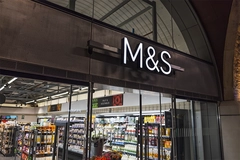
- Industry news
Industry news
- Category news
Category news
- Reports
- Key trends
- Multimedia
- Journal
- Events
- Suppliers
- Home
- Industry news
Industry news
- Category news
Category news
- Reports
- Key trends
- Multimedia
- Events
- Suppliers
Brand Protection: Using DNA to Combat Product Piracy

For years now the industry has suffered from imitation products. We look at some of the technological innovations to combat product piracy.
Four years on from the devastating accident in Gonesse near Paris it has now been confirmed: the cause of the Air France Concorde crash in July 2000 was a titanium spare part the plane lost just prior to take-off. 113 people lost their lives as a result of this accident. Yet the victims could have been spared as the titanium part fitted was not an original part but a fake whose sharp edges ripped through an airplane tyre of the French aircraft. Parts of the tyre perforated the side of the tank and led to the explosion. The original part had rounded edges and would have been harmless, say the experts investigating the accident. 
This extreme case illustrates the consequences that can occur when costs are cut or illegal copies are purchased by mistake.
For years now the industry has suffered from imitation products. What initially seemed harmless has caused economic damage to many industries. The problem has become widespread and is targeting the fashion sector as well as luxury items. CD or DVDs even being targeted here. The phenomenon still affects trend fashion and accessories brands as well as pharmaceuticals, spare parts for machinery and installations, trains and aeroplanes, food and beverages, cigarettes or perfumes and cosmetics.
Experts estimate that in Europe already as much as 10 % of car spare parts are counterfeit. Branded goods manufacturers suspect 7 % of their turnover is lost to counterfeit products. Economic damage in Germany alone is estimated at Euro 30 billion. Nearly everything is counterfeited.
A sector like the software industry is affected by sales on the worldwide web. According to estimates of the World Chamber of Commerce 10 % of turnover in the software sector is generated illegally. In Russia a dealer was banned from trading who was offering more than 1,000 such programs on the net.
This has prompted the industry to take numerous measures to protect itself from professional counterfeiters. Ultimately, it is not merely a question of preventing the economic damage caused by individual products. Cases of personal injury, as was the case with the Concorde disaster, are no longer isolated exceptions. interpack 2005 held from 21 to 27 April in Düsseldorf features 18 halls boasting 160,000 m2 exhibition space displaying everything revolving around the topic of packaging including the increasingly important topics of authenticity and brand protection - for packaging is a key component to safeguarding product authenticity.
Using a variety of technical “tricks” packaging manufacturers virtually built up a “firewall” against counterfeiters in the past. Technical developments are now revealing ever new means of protection which also cater to the economic interests of the production industry. Indeed, for a long time now counterfeiters have not merely restricted their interest to the high-priced goods sector. Mass-market products are also imitated en masse. In 2001 95 million counterfeit items were seized in the European Union alone. The value of these goods stood at Euro 2 billion and this is an upward trend.
For this reason, security measures are extremely topical throughout the entire branded goods industry which is now looking to techniques offered by packaging material manufacturers against counterfeiting. Basically speaking, the packaging material industry has at its disposal three means of safeguarding product authenticity with numerous variations – and these can also be deployed in combination.
Printing technology now has several security options to offer, some of which have already been used as safety features for banknotes:
- Intertwined lines in a high-quality resolution, also consisting of several colours, are known as guilloches.
- Microlines are even finer and in some cases these are legible as text under the magnifying glass.
- Raster texts produce a moiré pattern when rasters run towards each other at a certain angle. This makes it possible to imbed motifs in print rasters that can only be made visible using a special film.
- Micro-tagging particles made of different layers of ink form an individual code which can be attributed to one specific user.
- Embossing provides a three-dimensional aspect to the packaging.
- Finally, holograms can be integrated into primary or secondary packaging as this usually features 2D or 3D films or labels.
- The Data Matrix Code consists of an individual number which can be printed in masked form as a data code. This masking is intended as a means to prevent tampering. Data is read using a standard commercial scanner. This means even coded, covert information can be stored here.
Using special inks visual safety features can be integrated into the packaging:
- Coin reactive inks reveal a previously invisible print once scratched with the rim of a coin.
- Iriodin inks are used in combination with normal ink pigments. As “optically variable inks“, they react depending on the viewing angle and feature different printed images.
- Thermo-sensitive inks change shade once a pre-programmed temperature is exceeded. This is of particular interest for ensuring a product’s cold chain has not been interrupted.
- UV inks reveal fluorescent features under ultraviolet light.
- Infrared ink is initially invisible to the human eye and can only be seen with an infrared camera.
- Metameric inks are made to look identical in colour tone and can only be told apart using a colour filter.
- Scented inks are blended with a synthetic aroma.
Integrated safety features range from low to high-tech and are still in their early days:
- Around for long time now are tamper evidence security strips which are damaged once the packaging is opened thereby giving consumers a clear indication of possible counterfeiting.
- Smart labels are flat transponder labels which can be read at a distance of up to about 1.2 metres using wireless technology. The main advantage is the lack of a need to touch or see the goods directly. This means these multiply read-and-write labels can even be attached to a concealed part of the packaging. There is also a sufficient body of experience with this security measure.
- RFID (Radio Frequency Identification) requires a transmitter and a receiver. A transmitter-microchip is fixed to the packaging that displays unambiguous features. The complex information must be suitable for electronic processing. The transponders themselves are read-and-write types. At present, labels are the suitable carrier medium here. It is generally expected that RFID will replace the barcode as the transmitter has a higher performance. Retail chains are already running initial tests in the field of logistics.
- Data sound systems translate sounds into pixels which are printed on the packaging. Using a sound reader the packaging can be sound monitored for authenticity.
- At Media Protec similar security features are attached to all packaging components of pharmaceutical products. This applies to folded box packaging, pill blister packs and medication instruction leaflets.
- Now even artificial DNA can be used as a safety feature. On the basis of a synthetic DNA identification technique specific DNA-marking molecules can be integrated into a label. A special scanner can be used to read the information. Checking authenticity using a special pen is even less complicated.
Using these technical measures packaging can be made that is more difficult – though not impossible – to counterfeit. Many manufacturers are thus already using a combination. These can then be alternated according to requirements. From the packaging industry’s perspective the purely technical packaging costs are not affected by this as the packaging material is not changed in any way. However, the cost of packaging materials is increased here. At the same time, imitation of the packaging material becomes so elaborate for the counterfeiters that counterfeiting no longer pays off, the suppliers hope.
Alongside purely packaging technology-based measures it is, however, necessary to incorporate the entire value-added production (and especially logistics) chain into these security measures. This means equipping intermediary transfer points with technical control mechanisms – and obviously using them. This is because a lack of transparency in the product flow, more than any other factor, is what benefits product piracy. Safeguarding against counterfeiting is an entire package that only fulfils its function when applied in full.










